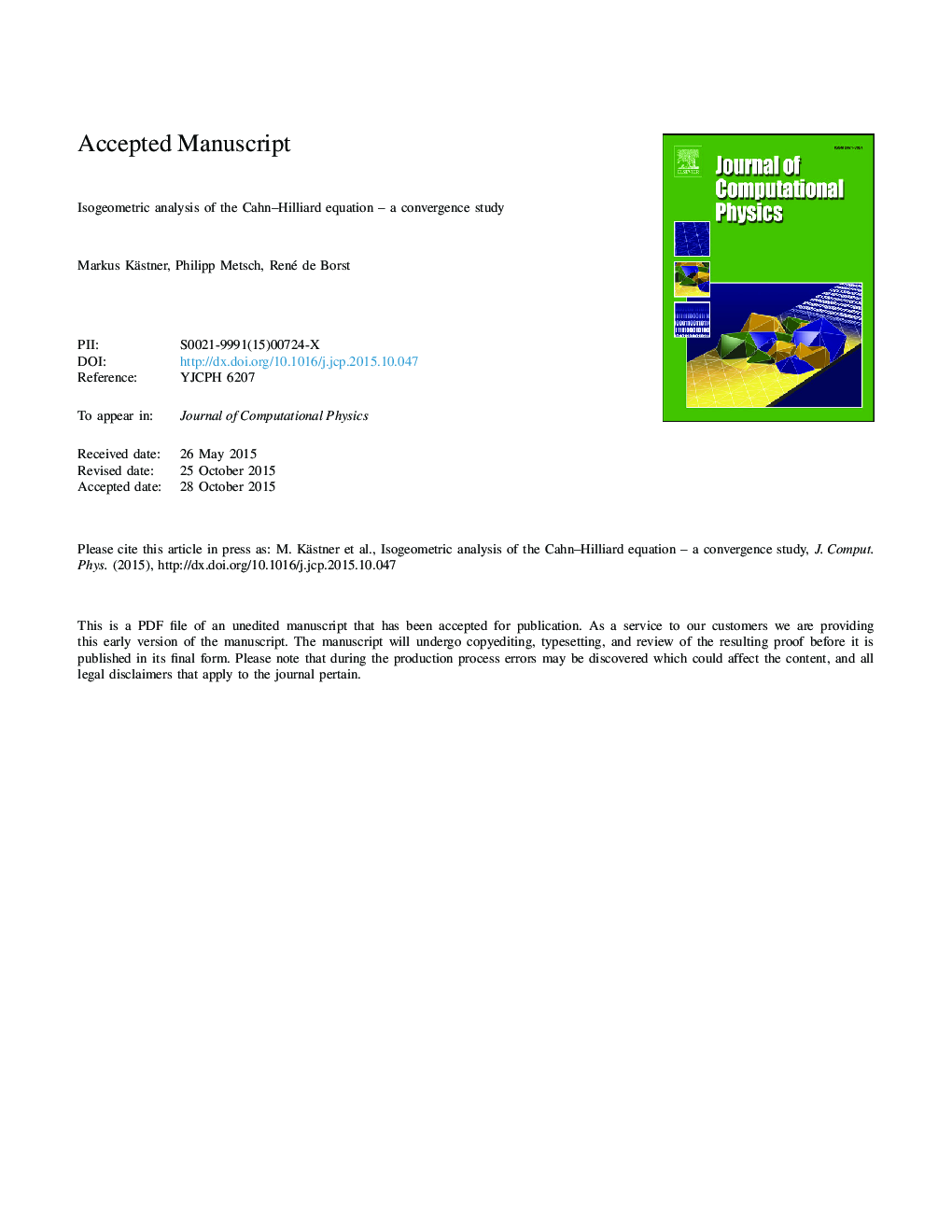| Article ID | Journal | Published Year | Pages | File Type |
|---|---|---|---|---|
| 6930862 | Journal of Computational Physics | 2016 | 15 Pages |
Abstract
Herein, we present a numerical convergence study of the Cahn-Hilliard phase-field model within an isogeometric finite element analysis framework. Using a manufactured solution, a mixed formulation of the Cahn-Hilliard equation and the direct discretisation of the weak form, which requires a C1-continuous approximation, are compared in terms of convergence rates. For approximations that are higher than second-order in space, the direct discretisation is found to be superior. Suboptimal convergence rates occur when splines of order p=2 are used. This is validated with a priori error estimates for linear problems. The convergence analysis is completed with an investigation of the temporal discretisation. Second-order accuracy is found for the generalised-α method. This ensures the functionality of an adaptive time stepping scheme which is required for the efficient numerical solution of the Cahn-Hilliard equation. The isogeometric finite element framework is eventually validated by two numerical examples of spinodal decomposition.
Related Topics
Physical Sciences and Engineering
Computer Science
Computer Science Applications
Authors
Markus Kästner, Philipp Metsch, René de Borst,
